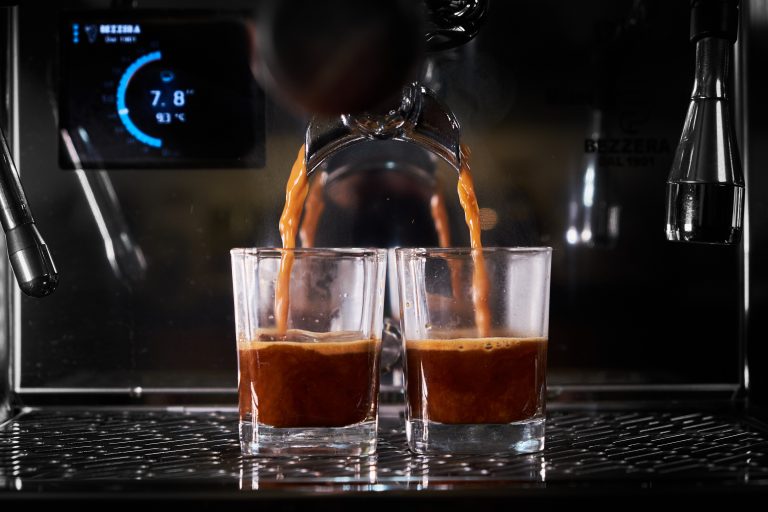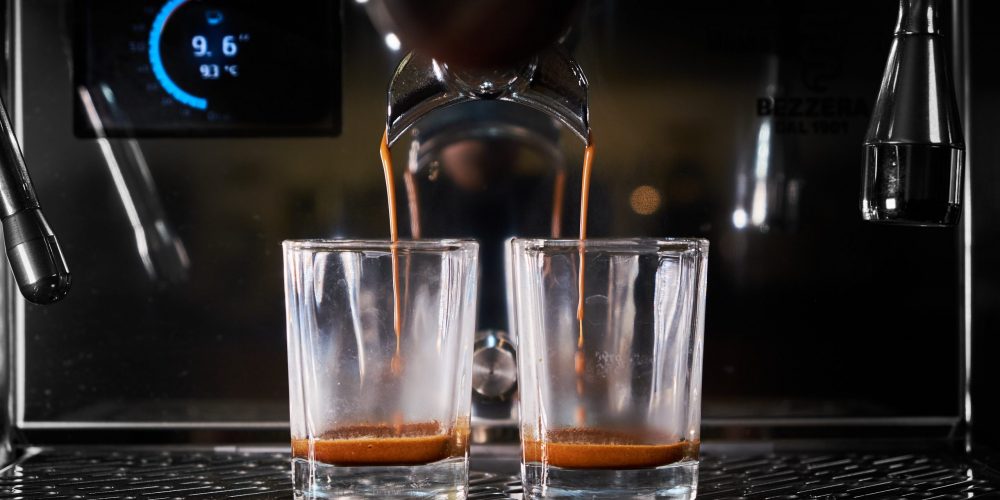The right mill
Often it all fails because of a good espresso grinder. Many coffee grinders that are sold as espresso grinders are not suitable for portafilter machines. Most very simple grinders either do not grind finely enough, cannot be adjusted precisely enough or break down after a short time. A suitable espresso grinder should have a fine and precise grinding setting, be powerful enough and have grinding discs with an espresso cut.
Factory preset
Most espresso grinders come from the factory with a reasonable basic setting. In rare cases, however, the setting is exactly right; it always depends on the individual roast, espresso grinder and portafilter machine that is used. Fine-tuning is actually always necessary; you want to get the best out of your new grinder.
The right grind for espresso
When adjusting the grinding level, it is important to note that if beans have already been put into the grinder, the grinding level can only be adjusted to a finer level while grinding is in progress. Otherwise, beans can become jammed between the grinding discs and block the grinder. If the grinder has a timer, it is a good idea to only set this when the grinding level is correct.
First, you should put a few beans into the grinder and check what the current grinding level is. The easiest way to tell is to rub some ground coffee between your fingers. It should feel coarser than flour and finer than sugar. If this is the case, you have a good basis to start fine-tuning.
It is better to only adjust the grinding level in small steps. Often it is enough to adjust half a number on the scale or one or two levels. The settings are minimal in the target range, so it is worth adjusting the grinding level precisely. If an adjustment has been made, the grinder always needs a few grams of ground material, depending on the size of the dead space, to achieve the set grinding level.
The first espresso shots
Now you can make your first espresso extractions. We always use the two-cup sieve to adjust the settings. It is important to work with the same amount of coffee as possible and to tamp evenly and straight. The easiest way to do this is of course with an espresso scale, which makes it easy to check the amount of coffee. To start with, we recommend filling the two-cup sieve to the brim. After 25 seconds, you should have 25ml in each cup. The time starts as soon as the extraction is started, not when the espresso starts running. If more than 50ml of espresso is brewed in 25 seconds, the grind is too coarse. If less than 50ml, it is too fine. The espresso stream makes it easy to see how appropriate the grind was. The following pictures show what the espresso stream should and should not look like:



Finally, we set the timer to the desired amount. If the espresso beans need to be changed, often only a minimal adjustment is necessary.
